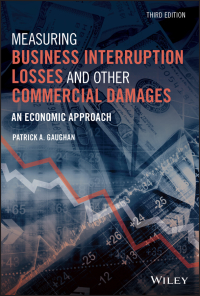Indicate whether the following statements are true or false. For each statement that you believe is false, you are required to provide a correct reason. (Note: a statement is false if there is any mistake in the statement and you are required to find all the mistakes in a statement.) A) Consider the sensitivity table of an LP as below. If the objective coefficient of Product 2 changes to 55, the optimal production quantities of the two products will stay the same, and the final value of the objective function (t.e., the total profit) will also stay the same. Variable Calls Final Reduced Objective Allowable Allowable # Cell Name Value Cost Coefficient Increase Decrease 9 5054 Produd: 6 0 30 SES4 Product 2 3 0 50 11 12 Constraints 3 Final Shadow Constraint Allowable Allowable 34 Cell Name Value Price R. Side Increase Decrease 15 $096 US 6 5 6 6 4 16 S0S LAS 5 2 17 5058 LHS 12 25 12 4 B) Inventory holding cost includes physical cost of warehouse spaces, taxes and insurance, breakage/spoilage, and financial opportunity cost C) Suppose a company operates a reorder point inventory model. If the company chooses to increase R, it will reduce the average holding cost while increasing the probability of stockout D) Consider the Newsvendor model. The optimal order quantity (i.e., Q*) is greater than the mean of the demand if and only if the average cost is smaller than the underage cost. E) You are figuring out how to optimize your order size given the following discount categories. You determined the EOQ for every level is 2,400 units. From this information, you should choose to purchase 2,400 units from supplier B. Level Units Price per unit A 1000 to 1999 B 2000 to 4999 $1.20 5000 to 9999 $1.15 D 10000 + $1.10 $1.25 C Indicate whether the following statements are true or false. For each statement that you believe is false, you are required to provide a correct reason. (Note: a statement is false if there is any mistake in the statement and you are required to find all the mistakes in a statement.) A) Consider the sensitivity table of an LP as below. If the objective coefficient of Product 2 changes to 55, the optimal production quantities of the two products will stay the same, and the final value of the objective function (t.e., the total profit) will also stay the same. Variable Calls Final Reduced Objective Allowable Allowable # Cell Name Value Cost Coefficient Increase Decrease 9 5054 Produd: 6 0 30 SES4 Product 2 3 0 50 11 12 Constraints 3 Final Shadow Constraint Allowable Allowable 34 Cell Name Value Price R. Side Increase Decrease 15 $096 US 6 5 6 6 4 16 S0S LAS 5 2 17 5058 LHS 12 25 12 4 B) Inventory holding cost includes physical cost of warehouse spaces, taxes and insurance, breakage/spoilage, and financial opportunity cost C) Suppose a company operates a reorder point inventory model. If the company chooses to increase R, it will reduce the average holding cost while increasing the probability of stockout D) Consider the Newsvendor model. The optimal order quantity (i.e., Q*) is greater than the mean of the demand if and only if the average cost is smaller than the underage cost. E) You are figuring out how to optimize your order size given the following discount categories. You determined the EOQ for every level is 2,400 units. From this information, you should choose to purchase 2,400 units from supplier B. Level Units Price per unit A 1000 to 1999 B 2000 to 4999 $1.20 5000 to 9999 $1.15 D 10000 + $1.10 $1.25 C







